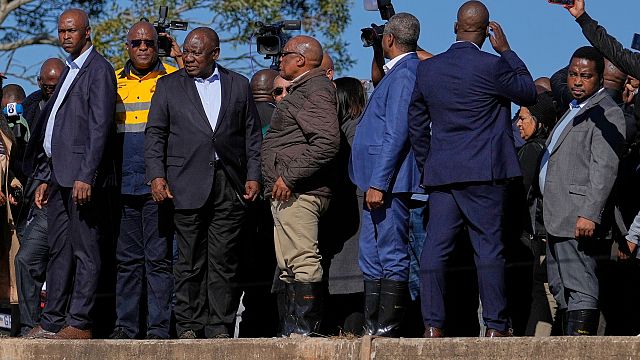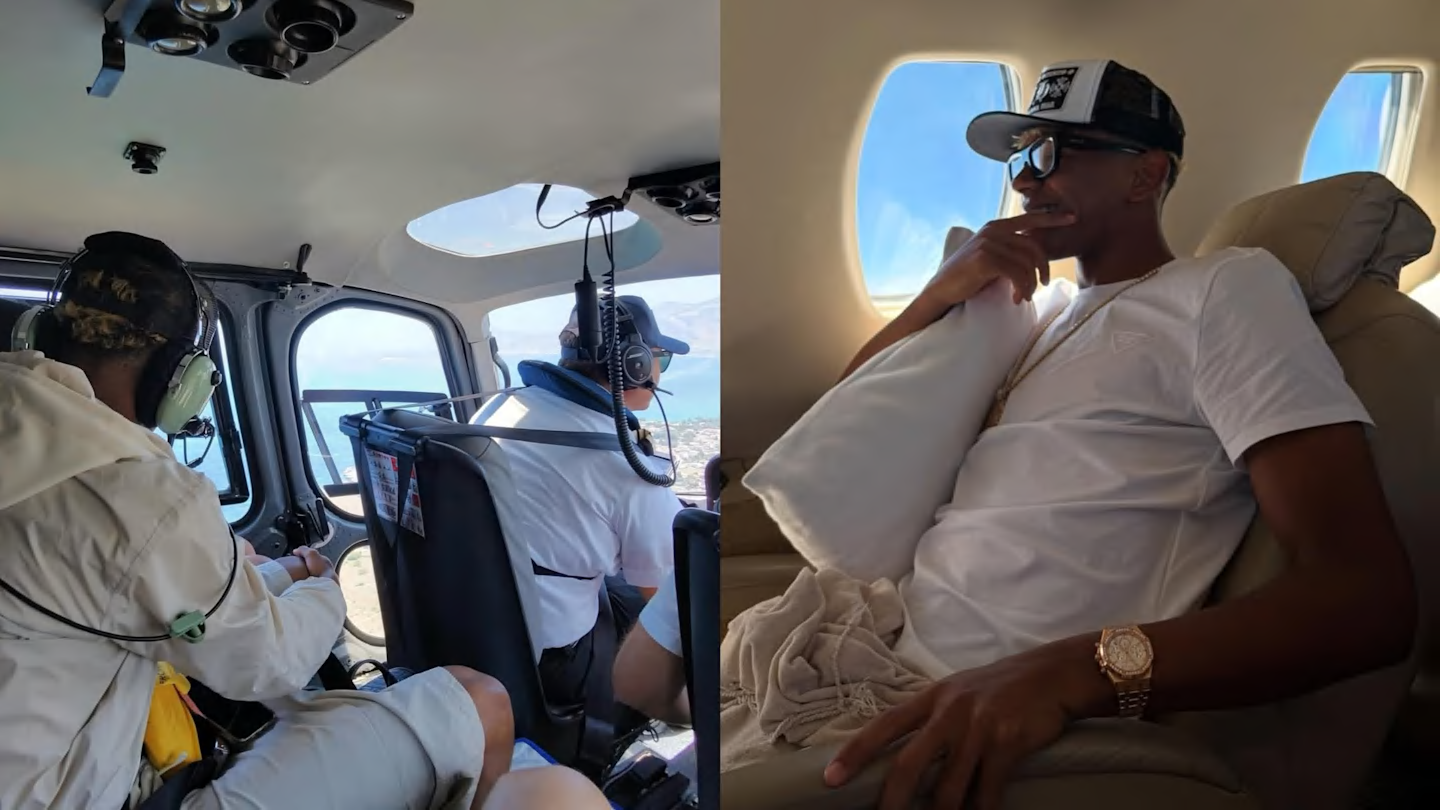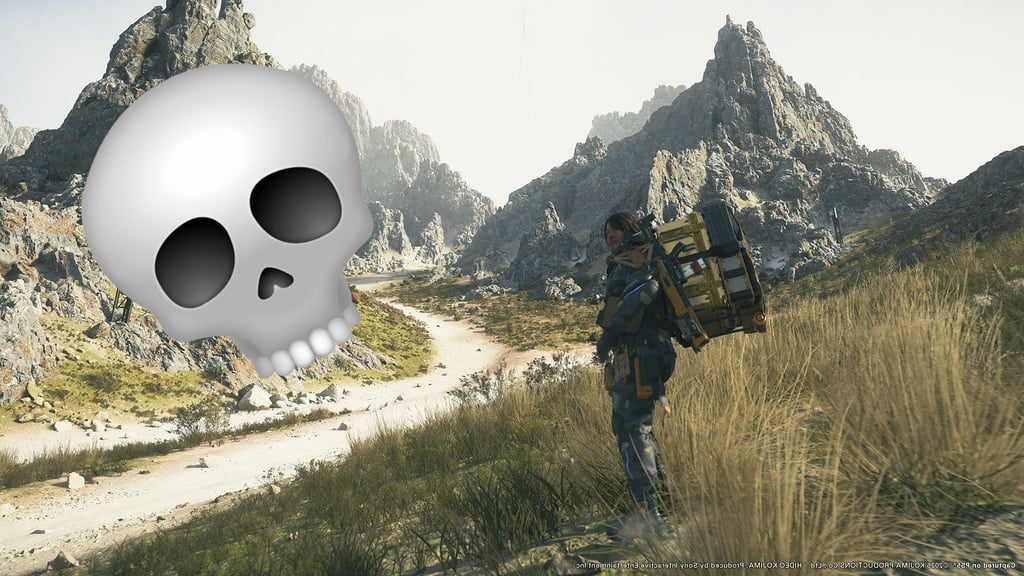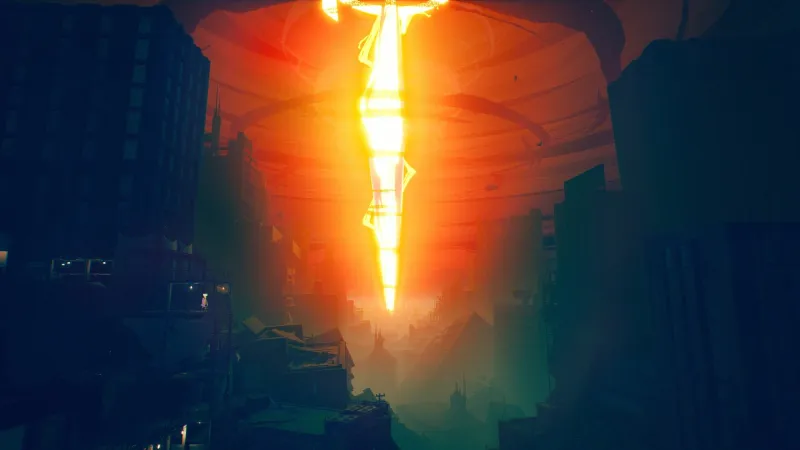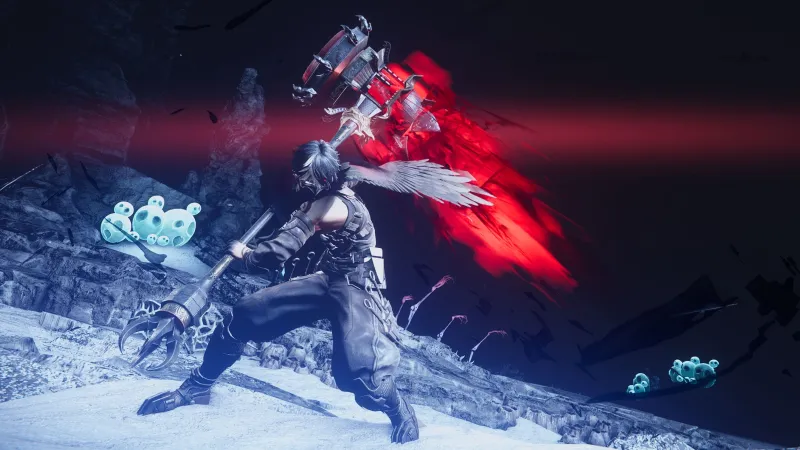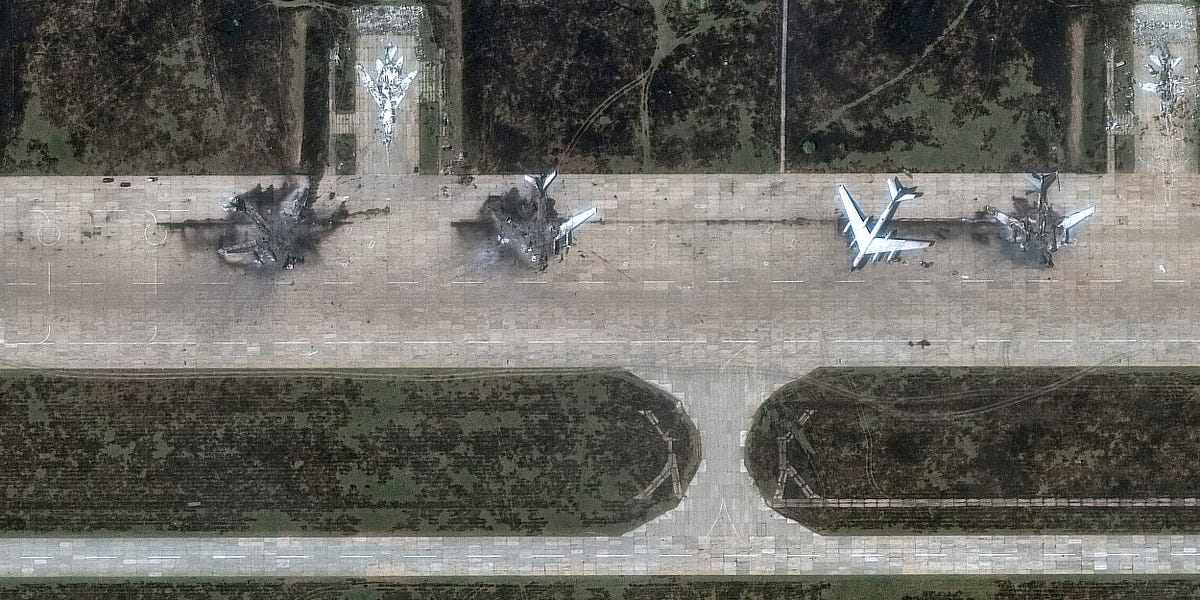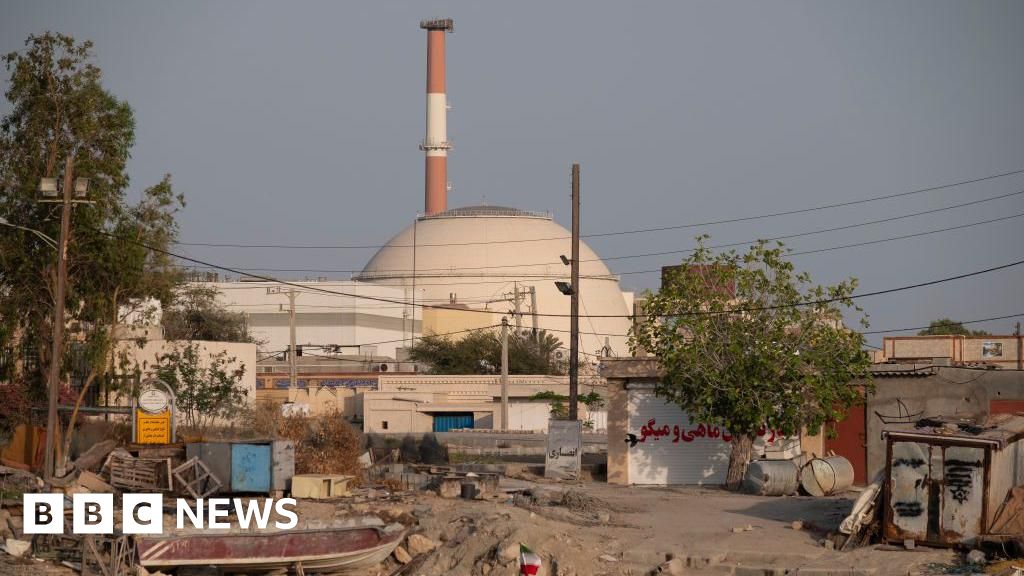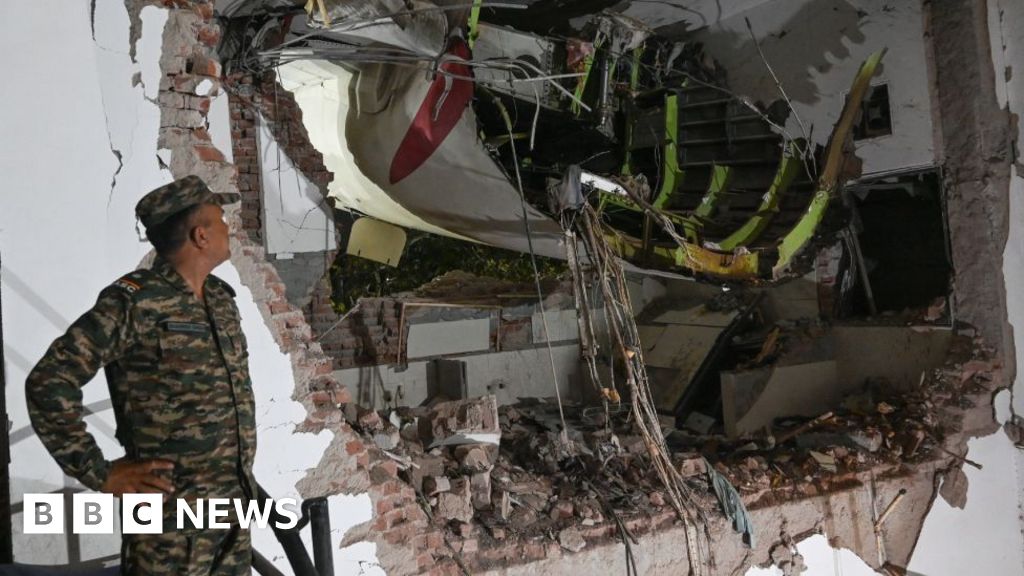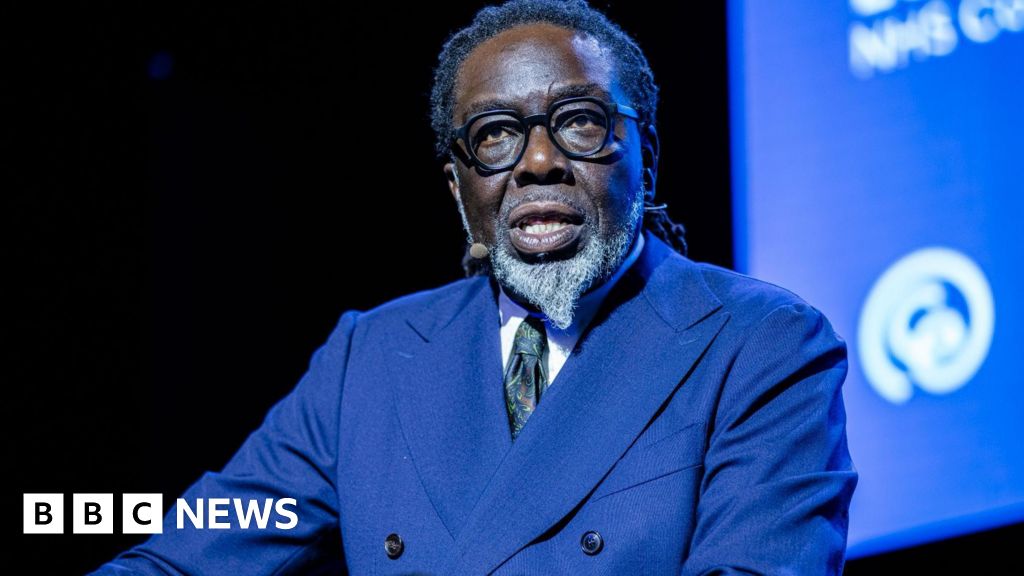How L.A. Ignited a New War Over Immigration

It was the morning shift at Ambiance Apparel, a clothing wholesaler on the edge of Los Angeles’s fashion district, and along with a crowded showroom of mannequins and women’s skirts was a sprawling warehouse, where immigrant workers were bustling about.
On any other day, the inventory would have flowed smoothly, from folded piles to cardboard boxes stacked on wooden pallets to be loaded onto trucks. But on June 6, as U.S. Immigration and Customs Enforcement agents swarmed the premises, dozens of employees at the warehouse and at a second facility nearby fled their workstations, ducking between shelves and inside boxes.
They couldn’t hide for long.
One of the workers, Tomas Anastacio, 55, who has three U.S.-born, college-educated children and has lived in Los Angeles for three decades, texted his son Carlos at around 10 a.m.
“Ca,” he wrote, “Immigration is at work.”
Carlos responded, “Oh no, I love you very much.”
When Carlos arrived at the downtown warehouse a few minutes later, Mr. Anastacio was already gone. Carlos stood in disbelief as his father’s co-workers were hauled away and their loved ones screamed, cried and bid them goodbye.
By the end of the day, about 40 people had been taken into custody, and hundreds of protesters were clashing with the police in downtown Los Angeles. It was the opening salvo in days of turmoil that have upended parts of the nation’s second-largest city and touched off protests across the country. The day after the raid, as scattered protests grew, President Trump ordered thousands of National Guard and Marine Corps troops to Los Angeles in an extraordinary, and to many excessive, show of force.

That Los Angeles struck the match that led thousands of Americans to take to the streets came as little surprise. The city, in the largest blue state, is home to the country’s largest undocumented population. It seemed an inevitable target for Mr. Trump’s plan to conduct mass deportations. In fact, it appears that all sides — the Trump administration; Gov. Gavin Newsom and his lawyers; activists; and immigrants themselves — had spent months preparing for this moment.
It came early on June 6, when Mayor Karen Bass was at home getting ready for a breakfast meeting. The messages began to land. One. Then another. Then a veritable deluge. Federal immigration agents appeared to be conducting an immigration raid of some sort, detaining day laborers at a Home Depot near MacArthur Park — three miles from the official mayor’s residence, The Getty House, and hours before the fashion district operation.
Stunned, she said, she asked her security detail to drive her there, quickly. Spanish-language media outlets were interviewing shaken bystanders by the time she pulled up. Frightened street vendors had abandoned their carts of tamales and rice pudding cups on the sidewalks.
The mayor stayed in the vehicle, cruising anonymously past the television trucks and the bystanders, reluctant to wade into a phalanx of reporters before she knew the whole story. But at some level, she already understood what was happening — had been expecting it, in fact, since Mr. Trump won the election.
From her black S.U.V., she gazed out the window. “My reaction was: ‘OK. Here we go.’”
Los Angeles had swiftly passed an ordinance in the days after Mr. Trump’s re-election that formally established the city as a so-called sanctuary zone, in alignment with a 2018 state law that limits the extent to which local law enforcement participates in immigration enforcement.
For months, in church basements, in community centers and over Zoom, immigrant advocates had been walking undocumented people through their rights, in case they were confronted by federal agents: Remain silent. Don’t let them in unless they slip a warrant, signed by a judge, under the door. Show them the red card that lists your constitutional rights.
Maegan Ortiz, executive director of the nonprofit group IDEPSCA, which supports day laborers, said the group had been running practice drills for months at five different job resource centers.
“I was playing ICE in different scenarios and literally timing everyone,” she said. “If I came from this side of the street, how long would it take for you to see me? How long would it take for workers to get inside and lock up the door?”
So in some ways workers already knew what to expect that Friday morning when camouflage-clad federal agents rolled through the city’s fashion district, a collection of narrow downtown alleyways where vendors sell leather handbags, quinceañera gowns and bolts of fabric in every shade.
A father of four who had shown up at the Ambiance Apparel warehouse for his shift packing women’s clothes had messaged his wife: “ICE is here. There’s very little time, they’re going to take us.” That was the last text he sent her before being detained.
Community organizers rushed to take photos and video to spread the word via a rapid response network established by immigrant rights, legal and faith-based groups to immediately report any ICE activity and dispatch people to disrupt the operations and use bullhorns to inform immigrants of their rights.
As the morning wore on, more activists, family members and neighbors crowded outside Ambiance Apparel to see workers lined up against a wall, handcuffed and muscled into law enforcement vans.
Montserrat Arrazola, a college student, was watching a live TikTok video and spotted her father’s workplace as the scene of the raid. She rushed over in time to see him loaded into a white van. Carlos Gonzalez said he saw his brother “being chained up like he was some kind of dangerous animal.”
Some protesters threw eggs and aluminum cans and shouted through wrought-iron gates at ICE agents, who had obscured their faces with sunglasses, masks and baseball caps. At some point, someone in the crowd tried to padlock the gate to prevent law enforcement vehicles from coming in or out, according to a federal complaint.
Even more federal agents with rifles rolled in on armored vehicles and came face to face with the protesters, who they said threw bicycles and rocks at them and slashed their tires. The agents fired rubber bullets and flash-bang grenades at the crowd, injuring at least one person with shrapnel.
The federal agents had clearly been prepared for a confrontation, perhaps in part because of what had happened in San Diego the previous week, when agents in tactical gear raided a popular Italian restaurant and were confronted by screaming protesters who tried to block their vehicles with their bodies. The military-style operation, in which some agents carried rifles and lobbed flash-bang grenades, set off days of demonstrations in San Diego.
The day before the first Los Angeles raids, Mr. Trump waved away reporters from his round table with leaders of police unions at the White House, and he privately indicated that an aggressive new phase of his deportation campaign was coming, according to one of the law enforcement officials in attendance.
He criticized “rogue prosecutors” blocking his agenda and said that immigration agents would soon be greatly expanding their presence in cities.
The next day, Thomas D. Homan, appointed border czar by Mr. Trump, visited the ICE field office in Los Angeles, where agents were gearing up for the forthcoming raids. He was accompanied by Dr. Phil McGraw, the conservative-leaning on-air psychologist, who later broadcast his conversation with Mr. Homan.
Mr. Homan told the agents to be prepared for serious pushback from the public, and reminded them of their marching orders: “Zero tolerance. If someone impedes you, you arrest them. If someone puts hands on you, you arrest them. If someone tries to get between you and the alien you’re arresting, you’re going to arrest and prosecute them.”
Mr. Trump by then was at his residence in Bedminster, N.J., where he and his aides watched footage of the protests unfolding in Los Angeles.
The Situation Escalates
Mayor Bass had resumed her day after her visit to the Home Depot. She was near Los Angeles International Airport with local transportation officials for a late morning event when her phone blew up again: Another raid, this time downtown at Ambiance Apparel. David Huerta, the head of the Service Employees International Union-United Service Workers West and a well-known Los Angeles labor leader, had been arrested. She jumped back into her S.U.V.
Federal authorities, in the criminal complaint they later filed against Mr. Huerta, said that ICE agents had been confronted by a hostile crowd. “I want you to kill yourself!” one onlooker shouted, according to the complaint. “Go home and drink a lot of vodka and shoot yourself with your own goddamn revolver!”
Mr. Huerta, prosecutors said, shouted at the protesters, “Stop the vehicles!” and sat cross-legged in front of a vehicular gate. A video of Mr. Huerta’s arrest shows a federal agent pushing him while his hands were at his hips. He fell to the ground, was detained and then taken to the hospital to be treated for a head injury.
In California labor circles, news of Mr. Huerta’s arrest on charges of conspiracy to impede an officer spread within seconds. Lorena Gonzalez, president of the California Labor Federation, was having lunch in San Diego with a group of old friends when she received the first of about a half-dozen simultaneous calls.
The janitors union was the first to break through. “The reaction was, like, what the heck?” Ms. Gonzalez recalled. She excused herself and took to the phones. Leaders of S.E.I.U. Leaders of the Los Angeles County Federation of Labor. She called the president of the A.F.L.-C.I.O. in Washington, Elizabeth H. Shuler, to give her a heads-up. “She was like, ‘Oh my god.’”
The ensuing hours were a flurry of planning, trying to gather the facts of the situation and Mr. Huerta’s condition.
Mayor Bass raced to the apparel wholesaler, debriefing with the police chief and expressing her outrage to reporters. Then, worried about Mr. Huerta, she went to the county hospital emergency room and negotiated her way past federal agents to find him on a bed, “very emotional.”
It was not clear whether federal authorities knew at the time that they had taken a powerful labor leader into custody. “We had no idea who he was when he was arrested,” the U.S. attorney in Los Angeles, Bill Essayli, said in an interview the next day. “He’s being housed at the Metropolitan Detention Center, like every other criminal who gets arrested in our district.”
Across the rapid response network, there was an urgent call to action. A minute later, someone texted that ICE agents were in another part of the city arresting day laborers who had gathered there.
By evening, hundreds of people had swarmed the federal detention center where some of the detainees were being held. Demonstrators chanted “Free them all,” vandalized the building and hurled chairs, rocks and other objects at officers. Federal authorities guarding the detention center fired projectiles, flash-bang grenades and tear gas at the demonstrators, many of whom were the same activists who had been preparing immigrants for months.
“We’re marching toward Alameda,” said a text message at around 5:30 p.m. received by one activist organizer, Alex Quintero. “Crowds are merging,” said another.
At one point, a text popped up: “Be careful, it’s getting spicy.”
“They are starting to teargas people,” said another.
As the unrest was building, Mr. Trump called Mr. Newsom. According to a White House official, who was granted anonymity to discuss the unfolding events, he demanded that the governor get the police in gear and get things under control.
Mr. Newsom remembered the call very differently. In an interview with The New York Times, he said that he had tried to bring up the raids but that the president had changed the subject. “He never brought it up,” Mr. Newsom said. “Period, full stop. He lied about that.” He said he had no warning when, roughly 24 hours later, Mr. Trump bypassed the governor to announce he was deploying the National Guard to Los Angeles over his objections.
Friday had been Capt. Raul Jovel’s day off. The police official in charge of downtown Los Angeles had planned to treat himself to a steak dinner. He had even begun texting friends about meeting him for it.
But as he was driving on the 10 freeway to his planned meal, he got a call from his boss. “I need you to come in,” the boss told him. Crowds were gathering in the civic center.
“We were really unsure what was going to happen,” Captain Jovel recalled.
The federal officers who were under assault at the detention center were calling the Los Angeles police to help, and eventually, close to 200 officers from the department were sent to the scene.
“When I saw the federal officers deploying tear gas, that’s when you know it’s getting bad,” Captain Jovel said.
“OK, it’s escalated now,” he thought to himself. “Let’s really move in and take care of business.”
At around 7 p.m., the Los Angeles Police Department declared an unlawful assembly and ordered crowds to disperse, and lines of officers in riot gear began pushing demonstrators out of the streets. They did not make any arrests that night. But by that time, the detention facility had been tagged with anti-ICE graffiti, the ground was littered with shards of flash-bang grenades, and protesters had been riled up for a fight.
Protests Enter a Second Day
“Oh my god,” the voice on the Instagram livestream began.
It was Saturday morning, a little before 9 a.m., and José Luis Solache Jr., a state lawmaker from southeastern Los Angeles County, had pulled out his phone to film. He had been on his way to an event in a nearby city when he saw a convoy of what appeared to be federal officers that had just exited the freeway. They appeared to be staging near another Home Depot in Paramount, a small city southeast of Los Angeles where more than 80 percent of residents are Hispanic.
“I’m shaking,” Mr. Solache said as the camera jostled toward the intersection. “I’ve already let my team know so we’re going to make some calls.”
One of those he phoned was Peggy Lemons, Paramount’s mayor, who called her staff. No one at the federal government had warned the city of any enforcement action. City workers reported that the staging area was in an industrial park outside a federal Homeland Security office. They hadn’t divulged much, she said, but they said they were there not to raid the Home Depot but to conduct an operation elsewhere.
It was clear, as she pulled up in her Kia Sportage to the Home Depot, that fear had filled the vacuum left by no information.
“People just had already put two and two together and decided that they were going to, you know, go over there and snatch up people from our Home Depot,” she said. “So they started kind of like blocking them and taunting them and yelling, saying: ‘You’re not going to arrest anybody here. We don’t want you in our city.’”
In fact, she said, as far as she knew, the agents did not arrest any day laborers at the Home Depot. But two protesters were arrested.
Federal agents and sheriff’s deputies squared off with demonstrators, filling the streets of Paramount with tear gas and smoke on Saturday morning.
Standing a few feet from armed officers, Gabriel Garcia, 26, a teacher in the Paramount Unified School District who had rushed to the scene, called out to the protesters. “Be brave!” he shouted. “I know you’re scared, but so are undocumented families!”
The Paramount area is under the jurisdiction of the Los Angeles County sheriff, Robert Luna, who grew up in an unincorporated part of East Los Angeles that was patrolled by the department he now oversees.
“I come from an immigrant family,” Sheriff Luna said. “I have a lot of family members who migrated here. Some of them legally, some of them illegally.”
By the time he got to his command post on Saturday afternoon, the radio traffic was filled with reports of specialized units arriving. “A sign that things are not calm,” he said.
“When our deputies first arrived on that morning in Paramount, there was already full-scale confrontation between the feds and the community,” he said. “Eventually all the feds left, and then we got left there with the angry community.”
Sheriff Luna said that over a span of hours, his deputies had “tried everything to de-escalate the situation” and at one point declared an unlawful assembly. But after some in the crowd attacked deputies with broken cinder blocks, rocks, bottles and pepper spray, “we unfortunately had to respond.”
“We do not use less lethal munitions on protesters or demonstrators,” he said. “We use them on agitators who are attacking us or the public.”
Ms. Lemons’s eyes welled with tears as she described the events. She said she had been hearing all week from constituents who feared for the safety of their children, parents and family members.
“These are not people who just crossed the border,” she said. “These are people who’ve been here 15, 20, 30 years. They have no clue what this is all going to cost us, not just economically but on a personal and moral level. These are our hairdressers, our barbers, our lawn service workers. Our grocery store people.”
Law enforcement officials said the tone of the protests also seemed to change on Saturday. Cars now came in caravans. People showed up at protests in masks, dressed in black. Some brought hammers to break off chunks of concrete barriers that they could then throw at officers.
Jim McDonnell, the Los Angeles police chief, has said that a clear distinction emerged between “the people that we see during the day, who are legitimately out there exercising their First Amendment rights” and “the people who are out there doing the violence,” who are “hooded up” with face masks, moving from one place of civil unrest to another to “do this all the time.”
ICE officials emphasized that most of their arrest targets had been people with criminal records, but that others present during their operations might also face immigration charges.
“These rioters in Los Angeles are fighting to keep rapists, murderers and other violent criminals loose on Los Angeles streets,” Tricia McLaughlin, an assistant Homeland Security secretary, said in a statement on Sunday. “Instead of rioting, they should be thanking ICE officers every single day who wake up and make our communities safer.”
That morning, Jonathan Alvarado, 15, whose father is undocumented, spent several hours making cold calls to members of unions to encourage them to join the protests.
He followed a script, in English or Spanish, depending on the language listed next to the person’s name.
“We are speaking from the workers’ union,” he began, and explained where demonstrators were gathering at Gloria Molina Grand Park in downtown Los Angeles. “Can we count on you?”
The teenager and his mother, Marcelle, joined the demonstrations. But they would not stay for long.
Tensions intensified later on Sunday with the arrival of the National Guard. When self-driving cars were set ablaze and a crowd blocked the 101 freeway, law enforcement officers from multiple agencies responded with tear gas, rubber bullets and flash bangs. One person used a motorcycle to ram into a line of officers, the police said.
The crowd was much bigger by that time, the authorities said, perhaps as many as 1,000 people. Captain Jovel recalled that at one point, officers in five separate locations were asking for backup. “Sunday was the busiest, most volatile incident that I’ve seen in my 29 years,” he said.
Roughly 42 people were arrested by various agencies.
The families of those detained in the Ambiance Apparel raid have struggled to contact their loved ones.
Carlos Anastacio, whose father was taken, was not able to speak to him for four days, and has not been allowed to see him.
For over a decade, the elder Mr. Anastacio had worked for minimum wage in the packaging department at Ambiance. The first to rise each morning, he headed out early from their home in Koreatown and returned some 12 hours later.
“He wasn’t just the head of the household,” Carlos said in an interview. “He was our emotional support.”
When he manages to reach him on the phone at the overcrowded detention center, Carlos said, his father “sounds anxious, very much in fear of what the future holds.”
Lisa Knox, a lawyer who represents detained immigrants, called the ICE office in Los Angeles repeatedly to get information on the garment factory workers, to no avail. Then she sent an email to ICE again asking about one of the workers. Within 17 minutes, she received a succinct reply.
“Good morning,” the email read. “Your client has been removed to Mexico.”
Jill Cowan, Zolan Kanno-Youngs, Laurel Rosenhall, Ana Facio-Krajcer, Mimi Dwyer and Hamed Aleaziz contributed reporting.
What's Your Reaction?
 Like
0
Like
0
 Dislike
0
Dislike
0
 Love
0
Love
0
 Funny
0
Funny
0
 Angry
0
Angry
0
 Sad
0
Sad
0
 Wow
0
Wow
0







